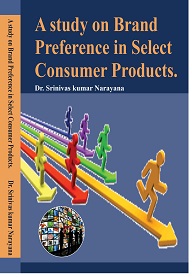
Dr. Srinivas kumar Narayana
Dr. Srinivas kumar Narayana with more than 16 years of professional
experience is currently Professor & Head of the Department for the
Department of Business Administration, Swami Ramananda Tirtha
Institute of Science & Technology (SRTIST), Nalgonda, Telangana, India.
He obtained Ph.D in Marketing from Osmania University. He has
published over 35 articles in various National & International Journals.
Dr.Srinivas kumar has presented 22 papers at various National &
International Conferences/Seminars besides being the Reviewer of
Several Management Journals. Dr.Srinivas kumar is also the member of
Editorial Board for National and International Journals. His research &
teaching interests includes Marketing Management, Retailing Management, Quantitative Techniques
etc., He can be reached at Karthick_narayana@yahoo.com
Read more...


